Connect With Us
Blog
Items filtered by date: December 2019
Treatment Options for Haglund’s Deformity
Haglund’s deformity, or pump bump or sometimes Bauer bump, is a condition where there is a bony development that forms at the rear side of one’s heel. In the end, this condition can lead to retrocalcaneal bursitis. If the retrocalcaneal bursitis is rubbed against any kind of footwear, this can be irritated and quite painful.
This condition has been known as “pump bump” because it typically occurs in pump-style shoes which women often wear. It is said that the inflexible backs of these shoes creates pressure which irritates the heel and causes the bump. As such, women who use heels are those who are most common victims of Haglund deformity.
Fortunately, there are varying treatments with this condition with the help of Haglund Deformity Doctor in Long Beach. With the direction of Dr. Pedram Aslmand, an expert in foot and ankle disorders, you have a good number of choices for treatment options when it comes to Haglund’s deformity. On that note, here is a brief description of the treatment options you can have:
Non-Surgical Options
In Haglund’s deformity, the main focus of treatment is by relieving the pain, and taking the pressure on the heel bone. On that note, here some of your options in treating it without surgery:
wearing of shoes that does not put pressure at the back of the heel
applying ice on the bump to reduce the swelling
taking anti-inflammatory drugs that are not non-steroidal
changing your physical activities such as running hard on surface can help
getting soft tissue massage
use heel pads to reduce pressure
calf stretches to reduce the tension on your Achilles tendon
Physical Therapy
Physical therapy and ultrasound can also be used in order to treat Huglund deformity. With regular therapy, the inflammation associated with bursitis can be reduced at least little by little. This option is best when combined with other treatment options for Haglund’s deformity. This way, you can expect much better result with relieving the pain, and reducing bone swelling from your heel.
Surgery and Injections
Surgery is one of the options that Haglund deformity doctor in Long Beach can offer you. This option is advisable if less invasive options do not work in helping with the condition. In the surgery option, the Hugland’s deformity doctor will remove the excess bone from the heel. In some cases, the bone is not removed and simply smoothed or filed down. With this option, the pressure on the soft tissue and heel is reduced.
Of all the treatment options you can do for Hugland’s deformity, the surgery is the most effective although the fact that it is invasive has its risks. But, rest assured that with the help on a Hugland deformity doctor from Long Beach, you can have the best treatment options to improve the condition of your Hungland’s deformity. Dr. Pedram Aslmand is an expert on all kinds of foot and ankle disorders and his expertise will allow you to take advantage of most comprehensive care available in Long Beach.
Best Ways to Treat Hammer Toe without Surgery
Best-ways-to-treat-hammer-toeHammer toe, also known as contracted toe is a particular medical condition that is usually caused by the muscle imbalance wherein one’s toes are bent and take a claw-like angle or position. Hammer toe is common with second toe and most frequently when bunion pushes the big toe under and towards it, though the toes can be equally affected. Some individuals think that Hammer Toe can only be treated with surgeries which is actually not true at all times. This medical condition can be treated even without resorting to surgeries.
So What Are The Best Ways to Treat Hammer Toe without Surgery
Splints
Splints are especially designed to straighten the curled hammer toes. The Hammer Toe splints can used also to extend the contracted toe which has been curled up or can be utilized to pull the hammer toe down. Splints are usually made of larger foam pads with single, double or 3 loops. These connect into the pad and then rise up perpendicularly to the pad. The splints function in such a way that it makes use of the body weight in pulling the hammer toe back on its normal state or alignment. These are commonly made of synthetic materials and can be hand washed in clean and lukewarm water. It is essential to dry the splints completely before using them again.
Shoes for Hammer Toes
There are generally the best and most suited shoes for hammer toes and these got good cushion and flexible area on the ball of your foot. The heels are needs to be supportive and strong and the front of the shoe must be flexible. Overall, these shoes should make one feel comfortable upon wearing it. Shoes for Hammer Toes are no like regular shoes and there are specific time when to wear these shoes. The best time to wear it is either after a walk or in the afternoon when foot commonly obtain more blood supply. Since people with hammer toes are not advised to wear high heels, wearing these flat and comfortable shoes is a better option.
Pads to Rectify Hammer Toes
Hammer toe pad are proven to be useful for individuals with hammer or contracted toes. This is mainly used in controlling motion of the toe and binding them in place to prevent this from rubbing against the shoes resulting to discomfort. There are many different pads that are now available in the market today which are especially designed for contracted or hammer toes. Choosing suitable pads is vital to lessen the discomfort because of hammer toes. Selecting the right pad also depends on the problem’s location.
These are just few of the many other possible treatments for hammer toes. Another highly considerable treatment is foot exercise specifically toe crunch exercises. You can also perform the toe tap and manual stretch exercises for hammer toes. If these exercises are done right, then these can contribute to the effective treatments for hammer toes. You do not really need to undergo costly surgeries unless otherwise all possible treatments no longer work for you.
Achilles Tendonitis Exercises To Avoid Doing
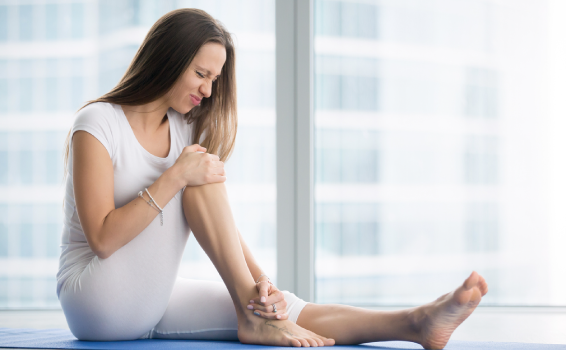 It is common for athletes, professionals and amateurs, to experience injury in tendons. One example of which is the “Achilles Tendonitis”. Specifically, Achilles tendon categorized as one of the tendons that are longer in our body. From our heel’s bone, it stretches to our calf muscles. A band of tissue that is springy and we feel it at our ankle’s back and directly above our heel. This allows our foot to extend and our toes to point the ground. Many exercises are applicable to aid Achilles tendonitis. On the other hand, there are also Achilles tendonitis exercises to avoid for some reasons.
It is common for athletes, professionals and amateurs, to experience injury in tendons. One example of which is the “Achilles Tendonitis”. Specifically, Achilles tendon categorized as one of the tendons that are longer in our body. From our heel’s bone, it stretches to our calf muscles. A band of tissue that is springy and we feel it at our ankle’s back and directly above our heel. This allows our foot to extend and our toes to point the ground. Many exercises are applicable to aid Achilles tendonitis. On the other hand, there are also Achilles tendonitis exercises to avoid for some reasons.
Tendinitis is the cause why many injuries involving the Achilles tendon are happening. It makes the tendon aching and swollen. Likewise, using a very strong force to the tendon might cause partial or complete damage. These are common to the persons who are involved and active in sports like gymnastics, soccer, basketball, tennis, running, softball, baseball, and others. If you are already, feeling pain along the back of your foot and above your heel when you are trying to stand on your toes or even when you stretch your ankle, swelling, and it is hard to flex your foot. Those are some of the symptoms of that injury. Exercises might help to treat it, although there are some that we need to avoid.
In curing an Achilles tendonitis, seeking a professional doctor and doing proper regular exercise and treatment will help. Always make sure that you are doing the right Achilles exercise. Since Achilles tendon is one of the main power generator when doing push off, we can notice that as the joint of the ankles stride it goes in an extensive motion. Then, the Achilles transfers the force and this is thrice the weight of your body. Moreover, as you started to run faster, possibility of more strain will be on the Achilles tendon.
Stop exercising without proper warm up. Avoid doing exercises, as running using an improper form for it will stress the tendon excessively. In addition, avoiding the ones that are risky and contraindicated is good. Many of the exercises might harm you instead of helping you if done improperly. Do not do exercises repeatedly for it will strain your tendon; just do the needed at a single routine. Do not do activities or sports that are vigorous depending on your strength.
Achilles tendonitis exercises to avoid are those that are not suitable and improper in treating an Achilles tendonitis. Practicing exercises that are eccentric are a good idea. It includes heel dropping (known as gastrocnemius) horizontally and in a slow manner. It is an ankle exercise done by standing using only one foot in a step position and the heel is raising. Gradually lower down the heel and keep your leg straight until your foot becomes parallel to the floor. Start the push up using the uninjured leg to support and repeat. Do this every day for twelve consecutive weeks, twice a day performing 3 x 15 of repetitions. Another is the heel drop known as soleus, wherein you will be standing using only one leg on a step position but this time you will bent the keen you want to exercise into 45 degrees. In the span of 12 weeks, do this twice a day containing 3 x 15 repetitions.
Refrain from doing Achilles tendonitis exercises that are not that effective. As an alternative, Use those two basic exercises. That will help increase the volume of your tendon will boost your collagen production. Stop from exercising without proper guidelines coming from professionals to keep away from Achilles tendonitis. Learn to control your use of force.
Treatment Options for Chronic Ankle Injuries
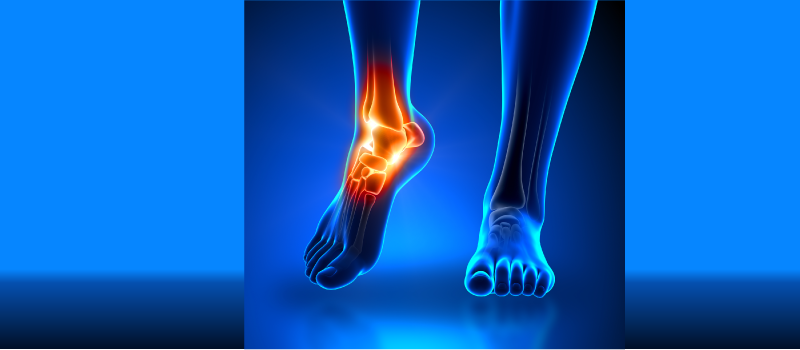
Treatment for chronic ankle injuriesAnkle injuries are usually termed as sports-related injuries as many people think such injuries are more common to athletes. However, one does not have to be an athlete to suffer from chronic ankle injuries. Something simple like walking on the uneven surface can already trigger a painful and debilitating pain. Ankle injuries could take place to anybody regardless of the age. On the other hand, men between the ages 15 and 24 years old may have increased rates of ankle sprain than women who are more than the age of 30 are more at risk than men.
Most of the time, ankle sprains can take place in case of an accident while playing. The most typical ankle injuries are fractures and sprains that involve bones and ligaments in your ankle, yet you could also strain or tear a tendon. Ankle injuries can be defined by the type of tissue, which are tendon, ligament or bone that is damaged.
Treatment Options in Treating Chronic Ankle Injuries
Fractures could be treated either non-surgically or surgically. The doctor might cure the break even with no surgery through immobilizing the ankle provided that just one bone has been broken and when the bones aren’t out of their correct positions and that your ankle is in stable condition.
The physician will perform this by placing a brace which can be used as a splint or through placing a cast. When the ankle is unstable condition then that is the time the fracture should be surgically treated. Usually, the ankle can be made stable through the use of the metal plate with screws to keep the bones in place. After the surgery, your ankle will be protected using a splint till the swelling went down and with a cast.
The bones may take as much as 6 consecutive weeks to heal and your doctor would advise that you keep weight off the affected ankle at this phase so that the bones will be able to heal correctly. Tendons and ligaments may take more time to heal after the fracture has been completely mended. The time needed may go as lengthy as 2 years to experience no pain when moving and walking. Though, in many cases, patients are able to go back to their usual daily routine in 3 to 4 months.
When the doctor is sure that it will not cause any harm when you begin moving your ankle, you might require physical therapy in order to render gait training, strengthening, balance, as well as mobility exercises. The therapist would develop the home program you could use in order to regain the old normal functioning of it. This might take for you to go back to your normal walking pattern with no limping.
Meanwhile, the treatment for sprain will depend on the seriousness of the injury. The treatment can be graded as severe, moderate and mild. Surgery isn’t typically a treatment option for sprains except when the damage to your ankle was extensive wherein more ligaments were affected and if all the other treatment options did not work.
EPAT Treatment in Long Beach
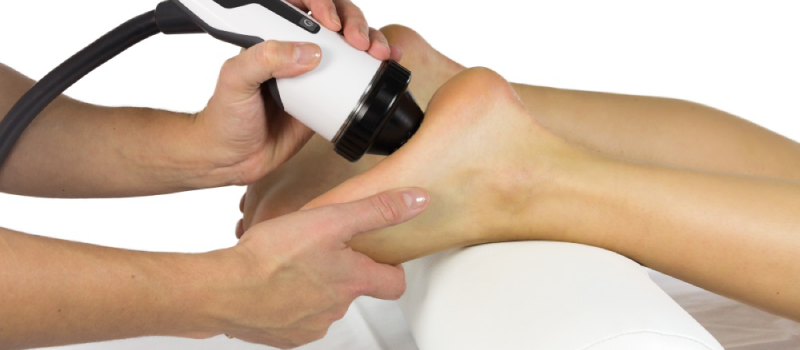
EPAT Treatment Long BeachThere are many people suffering from foot pain issues and they try every possible solution for relief. A more recent method in podiatry is Extracorporeal Pulse Activation Technology (EPAT) which is becoming a major therapy for patients. Approved by the FDA, EPAT is a highly effective treatment for chronic or acute muscle pains, tendon inflammation, and more. The facility at Long Beach, California is a great place to be treated with EPAT and offers exemplary service.
EPAT Treatment in Long Beach
The procedure is simply a noninvasive process that allows for the affected tissue to heal and recover. Moreover, EPAT treatment at our Long Beach office involves a doctor applying gel to the damaged area and the device is moved in a circle across the area, releasing waves of pressure to gradually relieve the tissues through regeneration. Typically, this process takes 15 minutes and is repeated 3 times at weekly interval sessions before effects are seen. Numerous patients praise the treatment and say that they are pain-free immediately or soon after undergoing the procedure.
What is EPAT Treatment Used For?
EPAT is used to treat a multitude of podiatric related problems, including heel pain, bursitis (inflammation of a bursa), achilles tendonitis, a number of sports injuries, and trigger points of pain. This is a partial list of ailments, but ask your podiatrist for more information in detail about whether EPAT is right for you.
There are countless benefits from the EPAT procedure because patients do not have to be concerned about the use of anesthesia and any risks since there are almost no side effects or issues related to performing EPAT (by a qualified medical professional). As mentioned earlier, the EPAT process does not involve any incisions and therefore, no possibility of serious infections. Another huge factor is the cost effectiveness of EPAT since it is covered by a majority of insurance plans and provides a quick solution for 80% of patients who have positive feedback from the new technology.
Long Beach EPAT Doctors
Patients who undergo the EPAT procedure can return to everyday activities within 24-48 hours afterward. Without any long term recovery time, patients can continue their daily life and resume strenuous activity in 4 weeks afterward. This lets people heal and move on with their lives while starting to live free of pain. Going to an office such as the one at Long Beach will have a calm setting and patients ought to be relieved within a month.
The EPAT procedure is a newer and quality solution for countless patients out there with podiatric issues. Being cost effective, patients also have the option to return to their normal lives immediately and to strenuous activity weeks later. All in all, EPAT is an effective podiatric treatment for all sufferers to think about.
If you are considering EPAT based on a recommendation, we encourage you to contact our Long Beach office to schedule a consultation.
Differences Between a Sprained and A Broken Ankle

Differences Between a Sprained and A Broken AnkleWhen you experience an ankle injury, you can notice that it is really a depressing one. This is especially when you will have to practice for your upcoming game or will have to jog anywhere. And, an ankle issue leads you further to being disabled on a temporary basis. You may also not able to walk properly due to this medical issue.
Actually, it is one of the most common injuries that are obtained from playing games like basketball, volleyball, tennis and a whole lot more. Ankle sprain usually lasts for a short period of time; however, a broken ankle might take some days for it to heal completely. And, it mainly requires one of going through regular checkups and exercises.
What exactly is the Difference of Sprained Ankle and Broken Ankle?
A sprained and a broken ankle are exactly two different things. To best understand their difference, any issue such as a chip, a crack or a break in the bone of an ankle or anklebone is considered to be a fracture/ broken ankle. The sprained ankle is actually an ankle injury with the disruption or tear in the ligaments. The ligaments are the fibrous tissues with the purpose of holding the bone in the joints.
That severe injury in the ankle actually consists of both issues; sprain and fracture. This now depends on how extreme the severity and the sprain and fracture type. Actually, the ankle sprain can vary from mild to severe. This is also commonly experienced by the athletes and is described as the common sports injury.
Key Differences Between a Sprained and A Broken Ankle
With broken ankles, these usually demand a lot of attention especially when it comes to medications and treatments. It is also more likely to become a severe ankle injury. If the pain and the swelling do not stop within 24 hours or even after 2 days, it is now suggested to consult a doctor and go through a proper treatment. There are times that the ankles become completely deformed, get weak and get dumb. Thus, consulting a sports medicine expert or even a physician is strongly suggested.
The pain and the swelling in the ankles indicate sprain and broken ankles. Actually, the sprain often occurs in the wrists and in the ankles and the broken ankle occurs in the ankles. With sprain ankle injuries, these may also bring more bruises to the affected area and cause more pain and swelling. On the other hand, broken ankles sometimes require surgeries for them to be repaired. And, this way, the dislocated bones can be fixed right away for good and fast recovery. Thus, medical attention is likewise needed.
It is also important to know the difference between the sprained ankles and broken ankles. As compared to the sprained one, the broken ankle is even made more severe that causes an individual to suffer from being unable to walk temporarily. This also gets severe when not properly treated and medicated. This injury often occurs in players and athletes.
Am I OK To Fly With a Sprained Ankle

Traveling could mean a big challenge especially when you are not feeling well. You could just imagine a long period of sitting and walking on museum floors leaving you even more in pain. Flying with a sprained ankle first requires treatment that helps avoid worsened symptoms and damage throughout the trip.
To clear things out, you can still even fly with a sprained ankle but you need to be ready as your leg can be left dependent or hanging down over a period of time. This only further increases stiffness and swelling you felt from the very beginning.
Ankle sprain is actually an injury wherein the foot turns over on the legs while the ligaments are stretched out. By consulting a doctor, he or she will be ready in determining if it is a sprain.
How Do I Know If I’m OK To Fly With a Sprained Ankle
Even though, as mentioned, you can still fly with a sprained ankle, it does not necessarily mean that it is no longer dangerous. When you stay for hours on an airplane, it could lead to more pain and swelling that just staying off, elevating it and icing it.
It could also be possible that if there is an increased swelling, you could potentially develop DVT or a “deep vein thrombosis” or clotting in the leg. It is suggested by health experts to wear “TED hose” or “compression stockings” that can help control the swelling.
If you will ask about how long a sprained ankle can heal, it will still depend on the severity of the sprain. It usually takes one week or more when it is not properly treated. That is the main reason why it is advised of you to consult with your doctor.
The good news is that there are some essential things you can do in healing a sprained ankle. Among those things include the application of ice, cross training, ice and physical therapy. It is a lot better if you will consult an ankle and foot surgeon as he or she can guide you through all these things.
For instance, RICE is a protocol known for alleviating the pain and the sprain in your ankle. RICE actually means rest, icing, compression and elevation and is known to work well during the acute stage. When the pain has completely healed, you can already begin walking by means of utilizing your ankle support. This can help further prevent injury for the second time around.
Especially when you make use of a stiff sole, it can bring you more stability for exercises and walking activities and can help your motion. In the event that the symptoms still persisted, it is suggested to seek treatment because you may already have the so-called torn or fracture ligament. Pain medications or anti-inflammatory medicines may not help ease the symptoms away and improve the results after.
If you think you can fly with a sprained ankle and you can handle the long hours of sitting, you can book for your flight any moment from now. Be extra careful as well for your safety and security!
3 Summer Shoe Styles That Can Cause Injuries
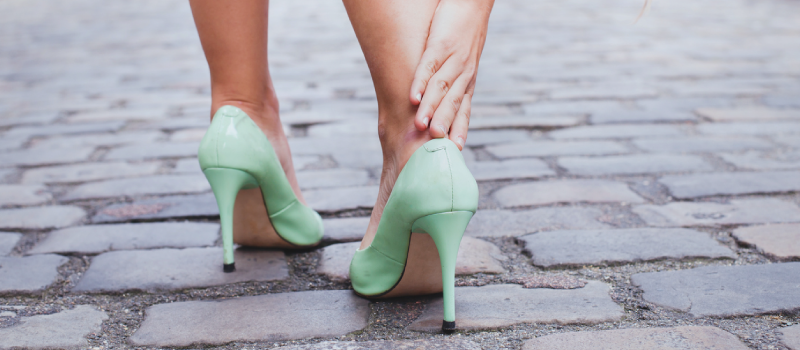
3 Summer Shoe Styles That Can Cause InjuriesWhen it is summer, it’s almost synonymous to beach and fun. During this time, people are all busy planning for a summer vacation by the beach, which means that you have to set aside your shoes and boots this time around. This season is the time to wear appropriate slippers like flip flops and sandals as you can see the people around you doing.
3 Summer Shoe Styles That Can Cause Injuries
Sandals and flip flops are the norm during summer but it is important to know that not all summer shoes are equal or ideal. There are actually summer shoes that while great looking can actually cause injuries. That makes it important for you to learn more about the different shoes that can cause injuries and be able to choose the right shoes for you.
On that note, here are 3 summer shoe styles you should know that puts you at risk with foot injuries. Read on and find out why these summer shoe styles are likely to cause you injuries. This way, you can choose which styles of shoes are better for you or at least learn how you can prevent getting injuries while wearing these shoes.
Peep-Toes, Mules and Similar Styles
Any shoe styles that lets your foot to slide out of place and makes you grip to the shoe with your toes is a risk. These kinds of shoe put you at risk with hammertoe which is a condition where the toe-joint become abnormally bent. To prevent this from happening, better choose the kind of shoes with enough straps to secure your foot, back and front.
Flip Flops
Of all the summer shoes that can cause injuries, the flip flops are considered the worst offenders. With flip flops, it is easy for your foot to slip out of place which could likely cause ankle sprain. At the same time, flip flops don’t offer enough support or cushioning for the heel, which can cause plantar fasciitis. There’s just a lot of risk for injuries when it comes to flip flops.
Wedge Shoes
One of the summer shoe styles that could cause injuries is the wedge styled shoes. The biggest hazard to this is the side-to-side instability. With that, it is easy for you to lose your balance in wedge shoes and then twist your ankle resulting to sprain. Aside from that, wearing wedges shifts your weight forward to the ball of your foot. When that happens, you are at risk to foot inflammation and mid-foot pain. In some cases, because they are usually of high heels, these shoes can cause fracture.
These are three of the common summer shoe styles that are known to cause injuries. Wearing are likely to put you at risk in injuries, some mild but others can be relatively serious.
When using these types of shoes, it is best to exercise caution or at least don’t wear them for the whole day. It is best to wear the kind of shoes that you’re most comfortable with and will not put you at risk to injuries.
Are Crocs Bad For Your Feet?
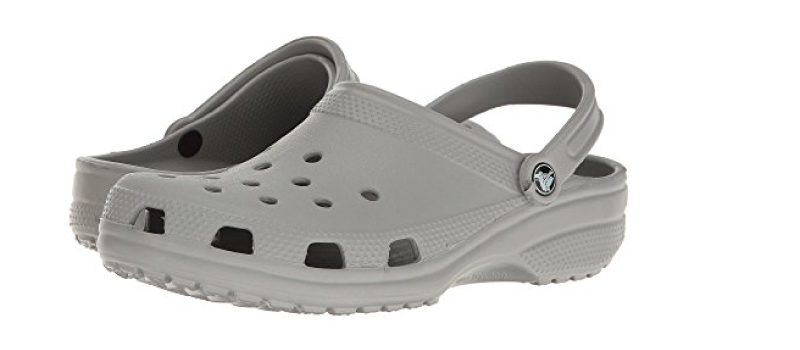
Crocs first came out the market back in 2002. They are rubber clogs that act as boater-floaters which has now sold over 300 million pairs in about 90 countries. A lot of people have tried a pair of Crocs – some love them, some hate them – but it sure is here to stay.
One of the reasons why people love Crocs is that they are comfortable to wear and convenient to slip on and off. With the floatability and rubbery attributes of Crocs, people cannot help but find it real comfortable to the feet. Crocs are also practical for wear, especially when you have to step in somewhere or something, which can be difficult to clean off your sneakers. Simply rinse or wipe off Crocs and they look good as new.
With these rubber clogs, you simply have to hose it or wipe it off and the dirt is gone without so much effort. It is pretty convenient which is why it’s not so surprising that a lot of people begun wearing them. But, there are some people who say otherwise and claim that Crocs are bad for your feet. The question then is “why are Crocs bad for your feet?”
Are Crocs Really Bad for Your Feet?
The answer would be yes. While a lot of people clearly remark that Crocs are comfortable, experts claim that Crocs don’t provide enough support while at the same time risks ankle injuries as well. In fact, a lot of podiatrists – the actual doctors – are not exactly a fan of Crocs. They say that Crocs are not exactly suitable for every-day use.
This rubber clogs do provide you with good arch support, but they do not offer you with enough heel support for a longer period of time. If that is the case, then wearing Crocs for longer periods of time can eventually lead to calluses, nail problems, tendinitis and other problems. This problem is just the same as when you use flip flops wherein the heel is not really secured.
That makes doctors not quite a fan of using Crocs even when a lot of people claim they are comfortable for use. According to experts, the most important part of a shoe is the shank – the structure between the toe and heel which gives it support. People who continuously use slippers that do not have a shank are likely to have foot pain.
Who Are Best to Wear Crocs?
Crocs aren’t advised to be used every day but this does not mean that you shouldn’t wear them at all. In fact, Crocs are ideal for use to some people, such as those people with very high arch and those who are suffering with excessive edema to their ankle and legs. But in any other circumstances, Crocs are best used for trips to the beach or pool.
It is not for the best to use them for 10 hours a day or for long walks. In that case, if you are planning on having a walk wearing a Croc, it is wise to use it in intervals. This way, you can rest your feet and avoid getting your ankle injured. So when you’re asked, “Are Crocs bad for your feet?”, just tell that they aren’t ideal for everyday use.
What to Expect After Hammertoe Surgery
What to Expect After Hammertoe Surgery Prior to knowing what hammertoe surgery is and what to expect after, it is still essential to know more about hammertoe. Actually, hammertoe takes place when the toes are twisted due to bending in the mid-point to a rotated or contracted toe.
It usually occurs as the tendons on the bottom and at the top of the toes become extreme. If the toes are twisted in this way, the outcome will often be seen in its hammer form. This is as the name suggests. Even biomechanical concerns in your feet may only cause imbalance of the tendon.
Hammertoe surgery is still believed to be the best treatment when you experience a severe hammertoe. There are two kinds of hammertoes: a rigid hammertoe and a flexible hammertoe.
Flexible hammertoe is less serious as it can later be diagnosed and cured while still at its growth stage. This is still manageable at the joint. But with rigid hammertoe, this is even a more serious issue. This can be most observed to patients who have serious arthritis. With this kind of hammertoe, the tendons have fit more closely. And, the joint have been titled. And thus, immobile making surgery is the best cure to consider.
There are lots of surgical options that mainly depend on the extent and location of the problem. The first choice is arthroplasty. A part of your joint is best eliminated and even your toe is straightened. Fusion is another surgical option wherein the cartilage between the 2 toe bones is eliminated. The bone is also fused to make an even longer bone. There should also be an implant to place in your toe. With this kind of surgery, a part of your bone is eliminated and replaced with an implant.
Things to Expect After Hammertoe Surgery
After surgery, patient can still expect feeling the stiffness, swelling and limited mobility. For some patients, it could take as long as eight to twelve weeks to walk again. Some are already able to walk right after the surgery.
According to an expert surgeon, the guides and instructions after the surgery will vary. Therefore, follow all of the instructions of an attending surgeon. A usual recommendation mainly involves the limitation of weight bearing for twenty four hours after hammertoe surgery. One should also take some support for two to four weeks. There must also be the right footwear to use. Trainings or exercises help enhance the strength in your foot and toe muscles.
The Risks of Hammertoe Surgery
Just like with any other form of surgery, there might be a risk of infection after undergoing a hammertoe surgery. The toe might get inflamed for a long time right after the surgery. Numbness, nerve injury, restricted range of motion and an extended period of pain may occur. There is no assurance that the surgery will work in each case and the malformation could return.
Nevertheless, the hammertoe surgery is still considered to be the most successful procedure for surgeons at this point in time. More than 300,000 hammertoe surgeries are done every year with only a few minor complications. A lot of patients can also resume their daily activities.

